- in Fenster by Administrator
Turn Off Recent Items and Frequent Places in Windows 10
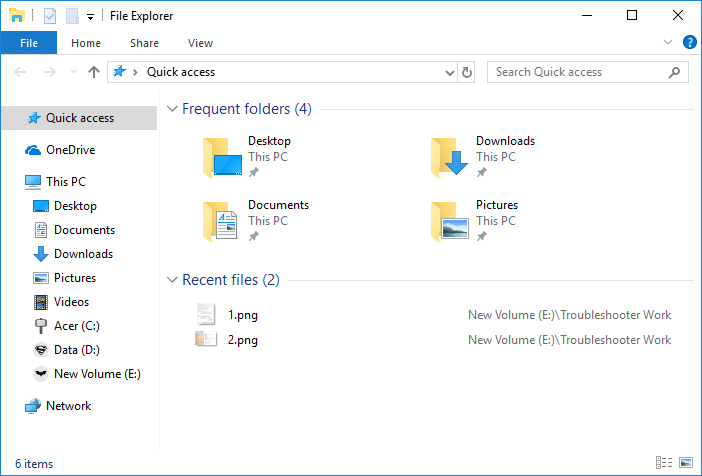
Whenever you open File Explorer using Windows Key + E shortcut keys, you will be taken to Quick Access window where you can view all your recently visited or opened files and folders. For some of the users, this feature is quite helpful, but this becomes an issue for their privacy for others. If you use your computer with other family members or friends then whatever files or folders you visit will be saved as history in Quick Acess, and anyone with the access to the PC can easily see what files or folders you have visited recently.

Your recent items and frequent places are stored in the following location:
%APPDATA%MicrosoftWindowsRecent Items
%APPDATA%MicrosoftWindowsRecentAutomaticDestinations
%APPDATA%MicrosoftWindowsRecentCustomDestinations
Now you have an option to clear your history which will clear the list of your recently visited files and folders from quick access menu but again this is not a full-proof method, as you need to clear the history every once in a while manually. On the other hand, you can completely turn off recent items and frequent places which would solve the problem of privacy for many users. Anyway, without wasting any time, let’s see How to Turn Off Recent Items and Frequent Places in Windows 10 with the help of the below-listed tutorial.
Turn Off Recent Items and Frequent Places in Windows 10
Stellen Sie sicher, dass Sie einen Wiederherstellungspunkt erstellen, für den Fall, dass etwas schief geht.
Method 1: Turn Off Recent Items and Frequent Places in File Explorer Options
1. Open Folder Options using any one of the methods listed here.
2. Next, under Privacy, make sure to uncheck the following:
Zuletzt verwendete Dateien in Schnellzugriff anzeigen
Häufig verwendete Ordner im Schnellzugriff anzeigen
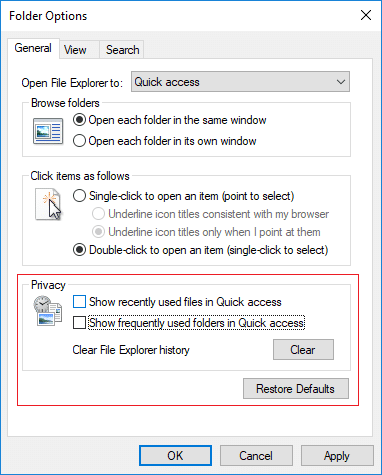
3. To Save changes, click Apply followed by OK.
4. Once finished, you may close Folder Options.
Method 2: Turn Off Recent Items and Frequent Places in Windows 10 Settings
1. Drücken Sie die Windows-Taste + I, um die Einstellungen zu öffnen, und klicken Sie dann auf Personalisierungssymbol.
2. Klicken Sie nun im linken Menü auf Anfang.
3. Nächster, ausschalten oder deaktivieren der Schalter unter „Zeigt kürzlich geöffnete Elemente in Sprunglisten beim Start oder in der Taskleiste an".
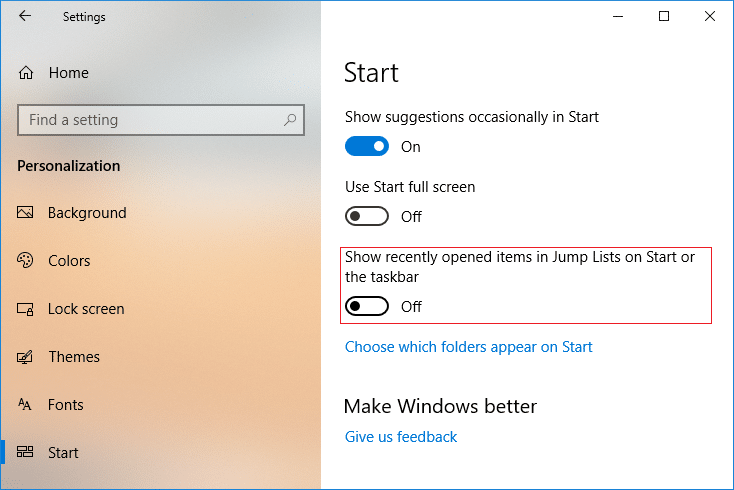
4. Once finished, you may close the Settings window.
Method 3: Turn Off Recent Items and Frequent Places in Group Policy Editor
Hinweis: This method will not work for Windows 10 Home edition users; it only works for Windows 10 Pro, Education, and Enterprise Editions.
1. Drücken Sie die Windows-Taste + R und geben Sie dann ein gpedit.msc und drücken Sie die Eingabetaste, um zu öffnen Gruppenrichtlinien-Editor
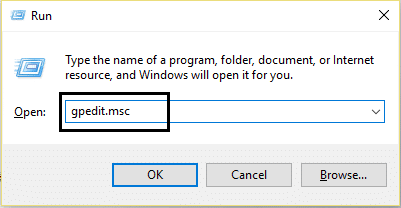
2. Navigieren Sie zur folgenden Richtlinie:
Benutzerkonfiguration> Administrative Vorlagen> Startmenü und Taskleiste
3 Wählen Startmenü und Taskleiste Doppelklicken Sie dann im rechten Fensterbereich auf „Do not keep a history of recently opened documents"Politik.
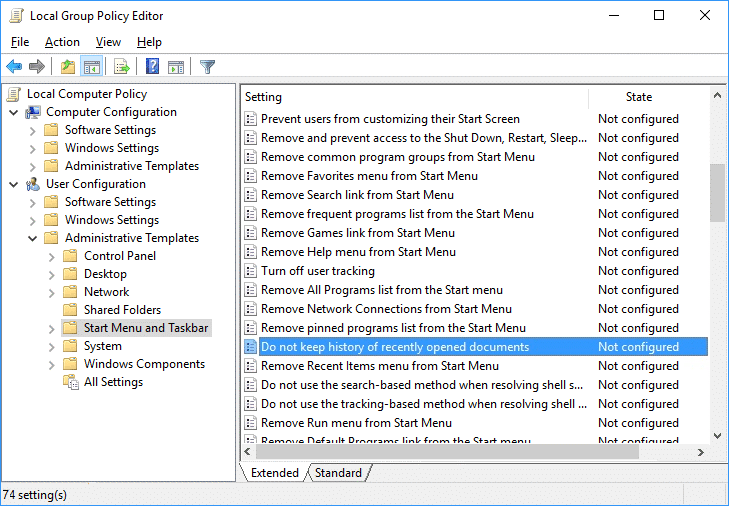
4. Now to disable Recent Items and Frequent Places, Wählen Sie Aktiviert for above policy, then click Apply followed by OK.

5. Similarly, double-click on “Remove Recent Items menu from Start Menu” and change it’s setting to Aktiviert.
6. Once finished, close everything, then reboot your PC.
Empfohlen:
Das ist es, Sie haben erfolgreich gelernt So deaktivieren Sie aktuelle Elemente und häufige Orte in Windows 10 Wenn Sie jedoch noch Fragen zu diesem Tutorial haben, können Sie diese gerne im Kommentarbereich stellen.